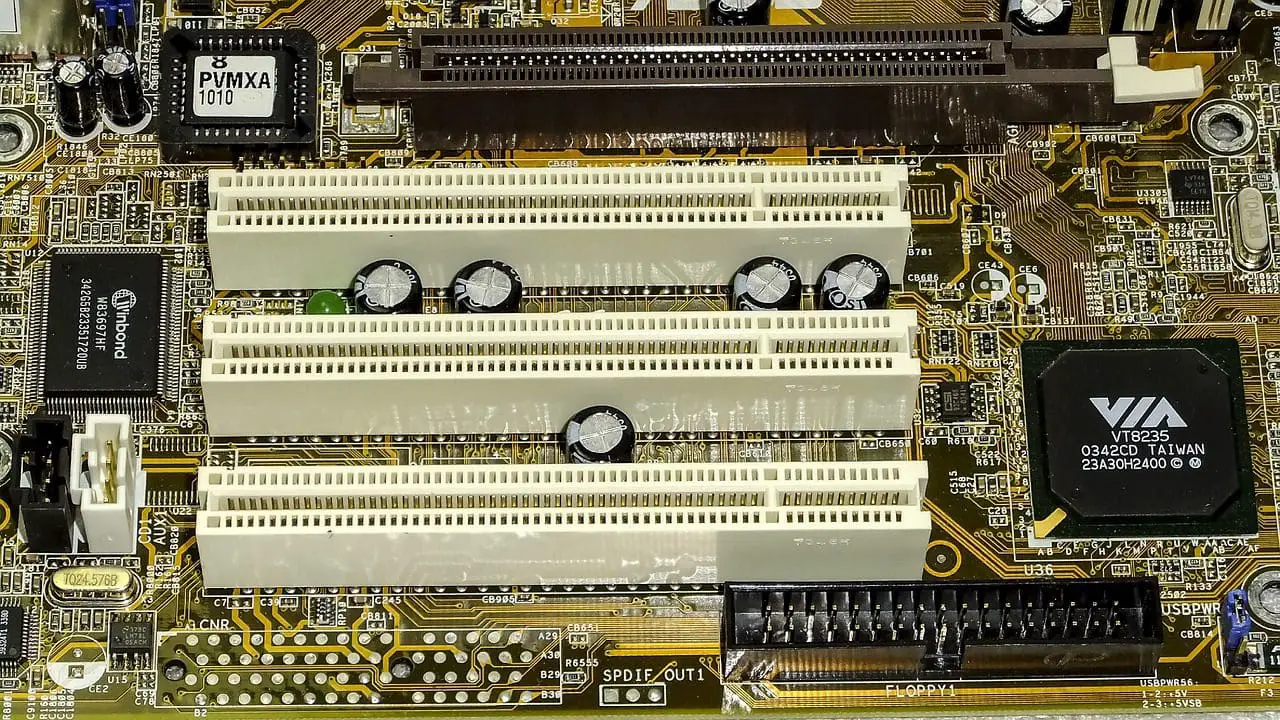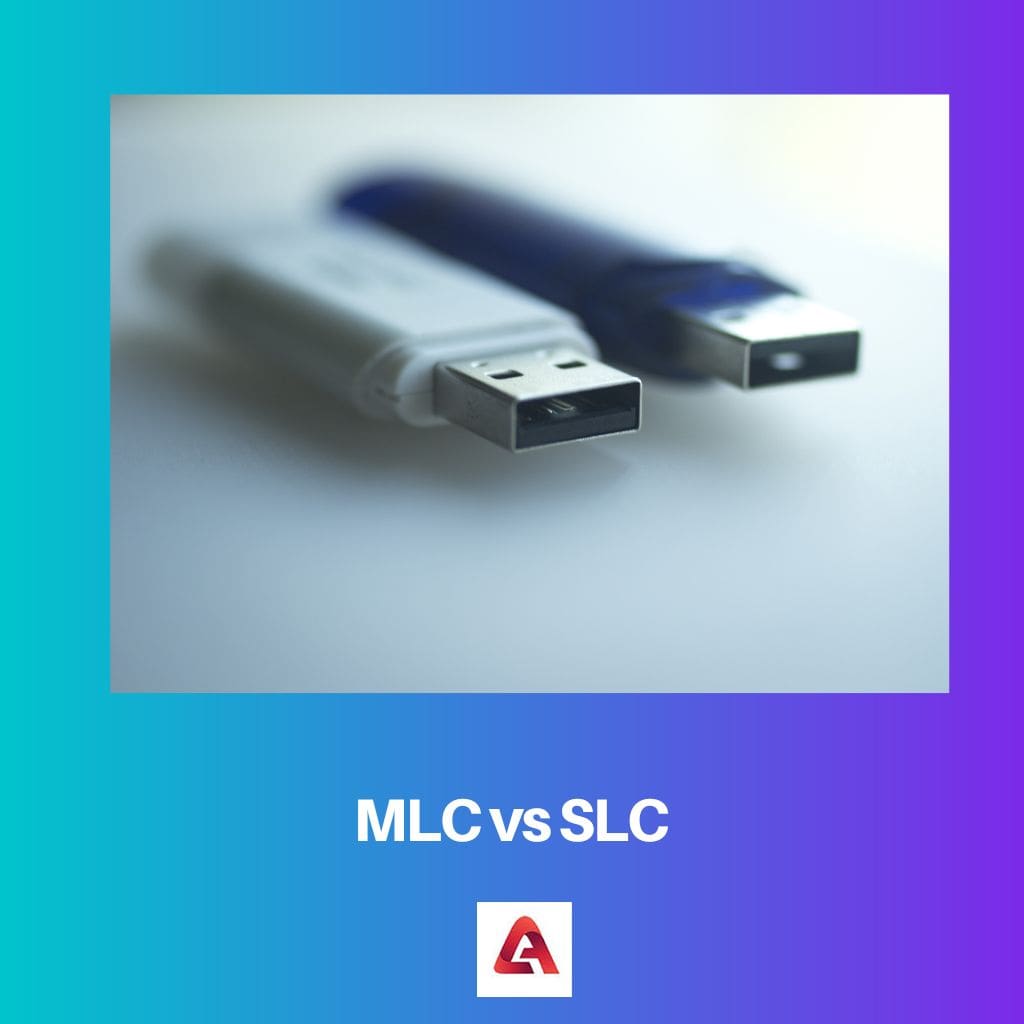PCI (Peripheral Component Interconnect) is an older standard for connecting expansion cards to a computer’s motherboard, offering slower data transfer rates and a parallel interface. PCI Express (PCIe) is its successor, featuring a serial interface and significantly faster data transfer rates, providing improved performance and scalability for modern computing systems.
Key Takeaways
- PCI and PCI Express are two computer expansion slots connecting peripheral devices to a computer’s motherboard.
- PCI is an older technology and has a slower data transfer rate than PCI Express, which is faster and more efficient.
- While many newer computers only use PCI Express slots, some older devices may still require PCI slots, and compatibility between the two types can be an issue.
PCI vs PCI Express
PCI is an older standard that was first introduced in 1992. It is a parallel bus standard, meaning data is transmitted over multiple wires simultaneously. PCIe is a newer standard that was first introduced in 2003. It is a serial bus standard, meaning data is transmitted over a single wire at a time.

Comparison Table
| Feature | PCI | PCI Express (PCIe) |
|---|---|---|
| Year Introduced | 1992 | 2003 |
| Type of Interface | Parallel | Serial |
| Topology | Shared Bus | Point-to-Point |
| Maximum Speed | 133 MB/s | Up to 16 GB/s (PCIe 5.0) |
| Slot Size | Uniform | Varies based on number of lanes (x1, x4, x8, x16) |
| Compatibility | Not compatible with PCIe | Software-compatible with PCI, but physically incompatible |
| Current Status | Largely obsolete | Widely used standard |
| Typical Applications | Low-bandwidth devices like network cards | High-bandwidth devices like graphics cards, network cards, storage controllers |
What is PCI?
PCI, or Peripheral Component Interconnect, is a computer bus standard that facilitates the connection of hardware devices to a computer’s motherboard. It was first introduced in 1992 and quickly became a standard interface for connecting various peripherals such as network cards, sound cards, and graphics cards to the motherboard.
Technical Details
PCI Architecture: PCI operates as a local bus standard, allowing multiple devices to be connected to the motherboard simultaneously. It employs a parallel architecture, meaning that data is transmitted across multiple wires simultaneously. The original PCI standard had a bus width of 32 bits, allowing for a maximum data transfer rate of 133 MB/s.
Expansion Slots: PCI slots on the motherboard serve as physical interfaces for expansion cards. These slots come in different sizes, including standard PCI slots, shorter PCI-X slots (for higher-performance applications), and PCI Express slots (for modern high-speed connectivity).
Compatibility: One of the significant advantages of PCI is its backward compatibility. This means that newer PCI devices can be used on older PCI slots, although at the speed of the older slot. However, the reverse is not true – older PCI devices cannot be used on newer PCI slots.
Limitations: Despite its widespread use for many years, PCI has several limitations. Its parallel architecture can lead to signal integrity issues, limiting its maximum speed. Additionally, as technology progressed, the demand for higher data transfer rates and more efficient communication led to the development of faster standards like PCI Express.

What is PCI Express?
PCI Express (PCIe) is a high-speed serial computer expansion bus standard introduced in 2004. It serves as a replacement for the older Parallel PCI (Peripheral Component Interconnect) and AGP (Accelerated Graphics Port) standards, offering significantly higher bandwidth and improved performance for connecting various peripheral devices to a computer’s motherboard.
Technical Details
Serial Architecture: PCI Express employs a serial architecture, transmitting data serially over multiple lanes, each consisting of two pairs of wires (differential signaling). This serial approach allows for higher data transfer rates and improved signal integrity compared to the parallel architecture used in older bus standards like PCI.
Lanes and Data Transfer Rates: PCIe utilizes a scalable architecture with multiple lanes, each capable of transmitting data independently. Common lane configurations include PCIe x1, x4, x8, and x16, with each “x” denoting the number of lanes. The number of lanes directly impacts the data transfer rate, with PCIe x1 providing lower bandwidth than PCIe x16. Data transfer rates for PCIe 3.0 (a common version as of the time of writing) range from 8 GT/s (Giga-transfers per second) for PCIe x1 to 128 GT/s for PCIe x16.
Compatibility and Backward Compatibility: PCI Express is designed with backward compatibility in mind, allowing newer PCIe devices to be used on older PCIe slots, albeit at reduced bandwidth. For example, a PCIe 3.0 device can operate in a PCIe 2.0 or PCIe 1.1 slot, but with decreased performance due to the lower data transfer rates of the older standard.

Main Differences Between PCI and PCI Express
- Architecture:
- PCI: Uses a parallel architecture, transmitting data across multiple wires simultaneously.
- PCIe: Utilizes a serial architecture, transmitting data serially over multiple lanes, each consisting of two pairs of wires.
- Data Transfer Rates:
- PCI: Offers slower data transfer rates compared to PCIe, up to 133 MB/s for a 32-bit bus.
- PCIe: Provides significantly higher data transfer rates, with versions like PCIe 3.0 offering speeds up to 8 GT/s per lane, scalable to accommodate various bandwidth requirements.
- Scalability:
- PCI: Limited scalability due to its fixed bus width and slower data rates.
- PCIe: Highly scalable, allowing for the addition of more lanes to increase bandwidth as needed, making it suitable for high-performance computing applications.
- Compatibility:
- PCI: Backward compatible, enabling newer PCI devices to function in older PCI slots, albeit at reduced performance.
- PCIe: Designed with backward compatibility in mind, allowing newer PCIe devices to operate in older PCIe slots, but with decreased bandwidth.
- Latency and Power Management:
- PCI: Higher latency and limited power management features compared to PCIe.
- PCIe: Lower latency and improved power management capabilities, enhancing overall system performance and energy efficiency.
- Signal Integrity:
- PCI: Prone to signal integrity issues due to its parallel architecture.
- PCIe: Mitigates signal integrity issues by employing a serial architecture, resulting in more reliable data transmission.





